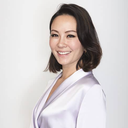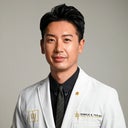Thank you for your question. You have submitted several photos and state you’re 1 month after undergoing Asian eyelid surgery, and want to know how to deal with a perceived eyelid crease that’s too high and deep. You state your crease is 8 millimeters from the eyelid margin, and ask if massage can help.







